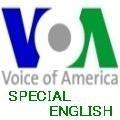Inventors Given Hope on Patents for Business Methods
This is the VOA Special English Economics Report.
Recently, the United States Supreme Court decided a case on the property rights of inventors. The question was whether a business method is enough of an invention to receive a patent. Patents are a form of intellectual property. They give legal protections to individuals and companies against the copying of their inventions.
Bernard Bilski and Rand Warsaw wanted to patent a method to let traders protect against the risk of price changes in energy markets. The United States Patent and Trademark Office said no.
So the inventors went to court. Again they were told no. Finally, the case went all the way to the Supreme Court. Last month, all nine justices said no.
But they only said no to a patent in this case. Patent lawyer Meredith Martin Addy in Chicago explains that the court ruled narrowly.
MEREDITH MARTIN ADDY: "The Supreme Court held that there is no categorical rule denying patent protection for business method patents." When patent laws were first developed, most patents were for machines. But since the late nineteen nineties, inventors of business methods and processes have increasingly sought patent protection.
Technology companies, especially software makers, watched the case closely. They were concerned that the Supreme Court would require a test of some kind that could limit what can be patented.
In its ruling, the court decided against the patent only because the idea was too abstract. Law professor Michael Meurer of Boston University gives a famous example from physics. It involves the relationship of energy, mass and the speed of light, written as the letter c. MICHAEL MEURER: "The Supreme Court has said, for example, if Albert Einstein determined that E = mc squared -- which he did -- he never would have been able to get a patent on that. That's too abstract." In the Bilski case, the court said patent examiners could consider what is known as the machine-or-transformation test. This is the idea that a patent should be given to a machine or something that creates a material change, like a chemical process.
But a majority of justices said patent examiners must also protect innovation. Patent lawyer Meredith Martin Addy says no one wants to suppress creativity.
MEREDITH MARTIN ADDY: "You can have that test, but it can't be an exclusive test because of the nature of the patent laws which are to protect new and unknown inventions." Now, more cases will be needed to define the legal limits of business method patents. Such patents already exist. In March, for example, after re-examination, Amazon.com received a patent for its one-click ordering process.
And that's the VOA Special English Economics Report, written by Mario Ritter. I'm Steve Ember.

